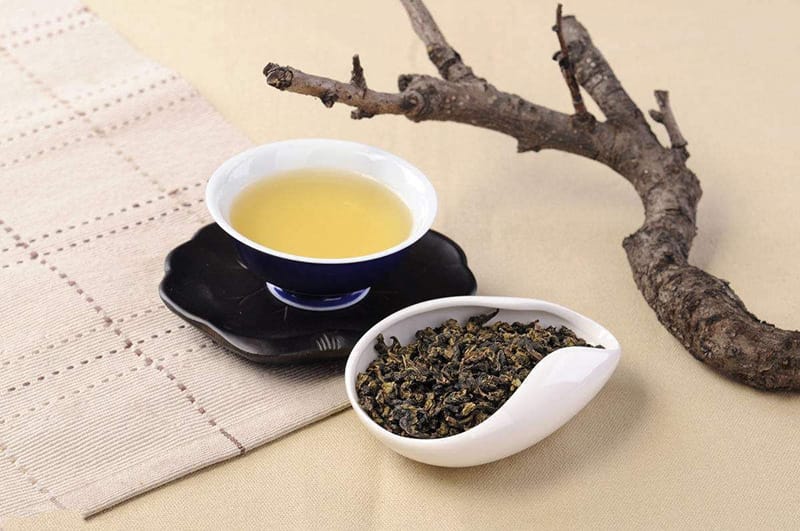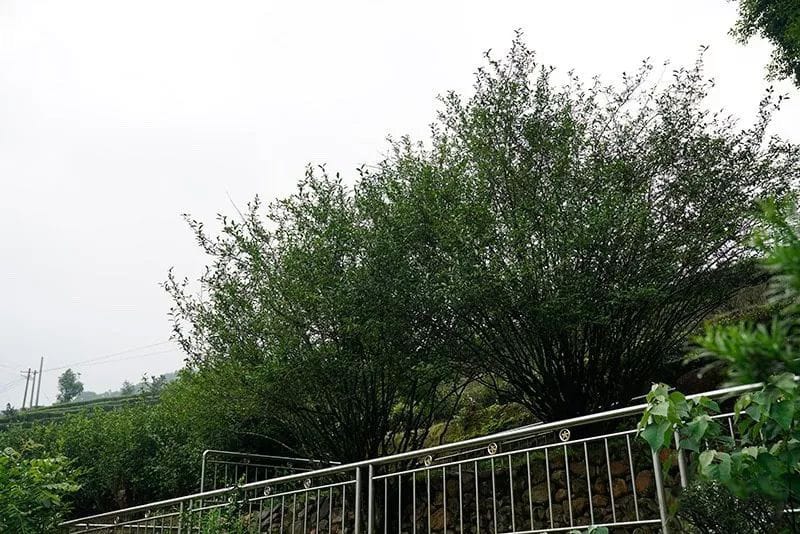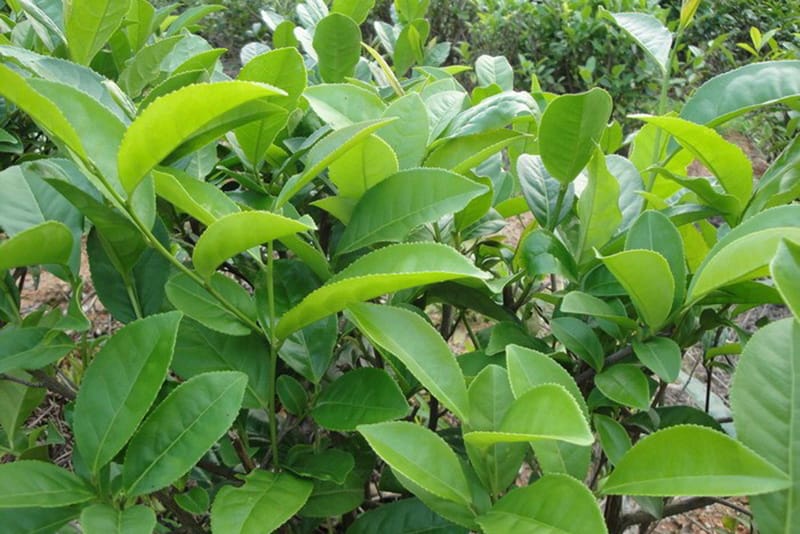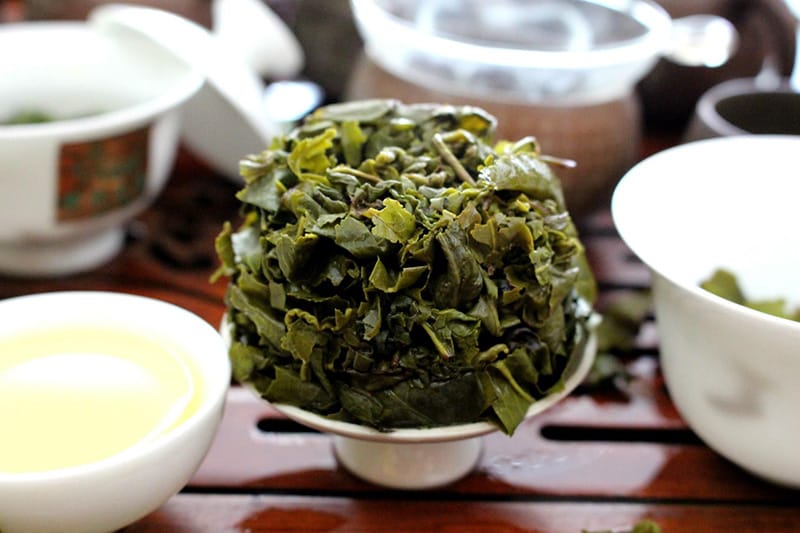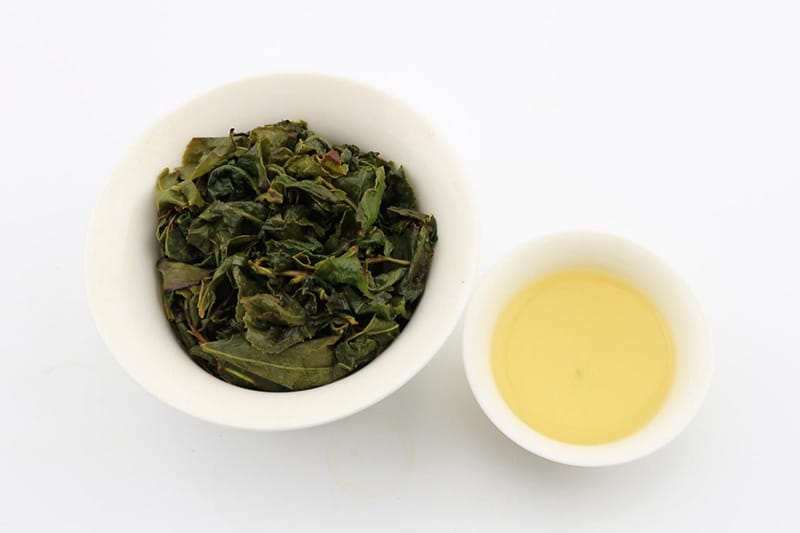Last Updated on 03/14/2021 by Desmond
Minnan is a famous Oolong tea-producing region, and the well-known Tieguanyin is originated there. The excellent natural environment in Anxi is very suitable for tea tree cultivation; 6 of 30 national-level eminent tea-plants are from here. However, maybe is the fame of Tieguanyin is too much, many tea lovers do not know there still many awesome Oolong teas in Anxi. Among them, Huangjin Gui tea maybe the most ignored.
Related Reading: Tieguanyin Tea – The Most Popular Oolong With High Orchid Fragrance.
CONTENT
What Is Huangjin Gui Tea
Huangjin Gui, also called Huang Dan Tea, which belongs to Partially-fermented Oolong. Just like Tieguanyin, it’s not only referring to a tea but also a Camellia Sinensis type. No matter the flavor, aroma, and quality, it got a small gap with Tieguanyin. Why do few people know Huangjin Gui tea now? Keep reading.
Names Legends
Huang Dan tea is the earliest name of Huangjin Gui, also called “Aroma Through the Sky.” About this name, there are two legends.
Here is the most approved one, about a happy story of a couple. In the Xianfeng reign of the Qing Dynasty(1860,) a young man married an adorable lady Wang Dan. After a month, Wang Dan brought a tea tree from her home as a gift according to the tradition. The plant was growing much faster than others, and it got ready to be harvest soon. The couple picks the leaves and made them into tea. After brewing, the tea in the cup show light-yellow and sent out a strong osmanthus fragrance, tastes sweet and fresh.
Neighbors were attracted by this tea soon. They asked for some branches for cultivation. Wang Dan pronounces like Huang Dan in the local language, so people called the tea Huang Dan tea. Why say this story is more approved? Because this mother tree survived through to 1967, unfortunately, it was dead by a house collapse accident. Nowadays, only two of the earliest planted in a cloning way survived and took as the mother trees.
The other legend is relatively insipid. It likewise happened in Qing Dynasty, a man named Wei found a tea tree in the mountain, which with a unique and robust fragrance. He picked a branch a brought it home for planting. After making it into tea, the aroma is more potent. He called it Huang Dan because the infusion is yellow(Huang) and taste-light(Dan.)
History
Huangjin Gui Oolong was always sold in the name Huang Dan tea. In 1940, the Jin Tai tea shop in Anxi changed the tea’s name to Huangjin Gui for a good sign; it means the golden(Huangjin) tea with osmanthus(Gui) aroma.
Later, a Fujian tea merchant named Lin set a shop in Singapore, took the Huangjin Gui tea as a brand and the main product. It was said that a major company ever purchased the name right with 300 thousand Yuan; it was a lot of money at that time. Maybe due to this, nowadays, Huangjin Gui tea is much famous in Southeast Asia than in other regions, even its birthplace China.
Tree Variety
In Anxi, there are 4 famous excellent Oolong tea trees. They are Tieguanyin, Huang Dan, Benshan, and Maoxie. Among them, Tieguanyin got the largest number, Huang Dan is second, Benshan and Maoxie have been rare now.
Huang Dan belongs to a clonal small arbor, middle-leaf Camellia Sinensis. Its leaves got a prominent characteristic, they are a slight crimp and with sharp sawtooth on the rim. The fuzz is less, so you hard to see the “Hao” in the final products. The Huang Dan tea tree has outstanding environmental suitability and pests and disease resistance ability; the yield is also high. Some tea masters even make the leaves into black tea or green tea.
What Is The Difference Between Tieguanyin And Huangjin Gui
Compare with Tieguanyin, people who know Huangjin Gui is really less. The reason is easy understanding. Fujian is a famous tea-producing region in China. Except for Tieguanyin, there are also Wuyi Rock Tea, Baihao Yinzhen, Lapsang Souchong, etc. The production resources have a limit; tea masters can’t produce and promote every type of teas well. A niche tea like Huangjin Gui can not get supported well; it makes a vicious circle, getting lesser fame.
Compare with Benshan and Maoxie, Huang Dan is much luckier. Maybe you ever tried it unintentionally. Yes, people still keep cultivating Huang Dan, more is because of its excellent osmanthus-like high-aroma; it is very suitable for making blended tea. Many tea masters will blend it with Tieguanyin to make blended tea for sale. But some dishonest merchants will pose the unsaleable Huangjin Gui as Tieguanyin.
You can distinguish Huangjin Gui and Tieguanyin in the following points:
| Huangjin Gui | Tieguanyin | |
| Aroma | osmanthus-like scent | orchid-like scent |
| Flavor | with a little astringent; the soft, smoothness, and purity degree are not as good as Tieguanyin | sweet, fresh, mellow, without any astringent (except the Qing-flavor type) |
| Leaves after brewed | thinner, harder, weaker, and a roughness | thicker, softer, and a high resilience |
How To Store
Huangjin Gui belongs to partially-fermented tea. That means it was not fermenting completely; it will keep in a slowly fermenting state and losing its original flavor gradually. Besides, Huangjin Gui tea’s primary characteristic is the delicate and robust osmanthus aroma, the infusion tastes relatively lighter. If to store it wrongly, it will make the scent lose, and the tea will become valueless.
During Huangjin Gui storage, you need to pay attention to the following points:
Airtightness. Huangjin Gui requires to store in an airtight environment. Because the circulating air is rich in oxygen, which will speed up the fermentation and microbial reproduction, leads the tea goes bad and affect the flavor.
Temperature. Just like Tieguanyin, Huangjin Gui needs to be stored in a relatively cold place and can’t be exposed to direct sunlight. The high-temperature also speeds up fermentation and microbial reproduction. You can keep the tea in a fridge. Still, you need an airtight container to avoid being contaminated by the moisture and the smell from other food.
Related Reading: Choose the best tea storage container for loose leaf tea.
Humidity. The air humidity under 60% is the best for Huangjin Gui tea storage. A humid environment makes the leaves go moldy easily and makes them get a damp smell.
How To Make Huangjin Gui Tea
To taste Huangjin Gui tea, experience its high-aroma is the most important thing. Thus, two things are required: a purple sand teapot and a smelling cup.
- Prepare and pre-heat the teawares;
- Put 7-9g(according to the guest amount) Huangjin Gui into the teapot, add hot water in, cover, then pour out the wastewater soon;
- Refill hot water above 95℃ in, cover, steep for about 30 seconds, let the aromatic substances in tea dissolve ample;
- Pour the infusion in the fair cup to equal the concentration;
- Pour the infusion into every guest smelling cup, let them enjoy the aroma;
- Drinking;
One feature of Oolong tea is resistance to brew. Huangjin Gui can be made over 7 rounds of infusion. After the first brewing, every round you can extend about 5 seconds steeping time. Huangjin Gui has a light flavor; the more times it is brewed, the aroma is lost faster. Compare with other Oolongs, the times it can be brewed is less than other oolong teas.
